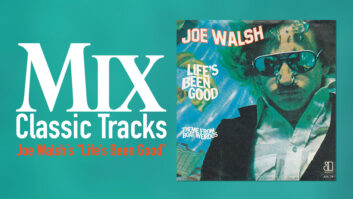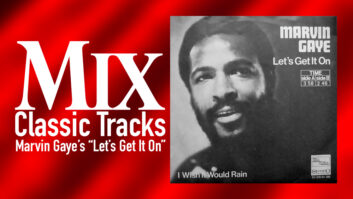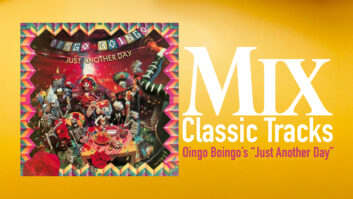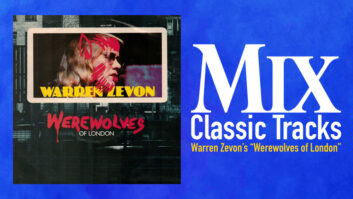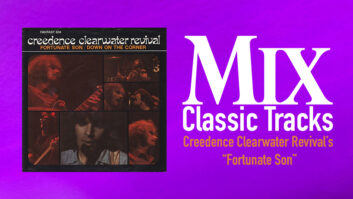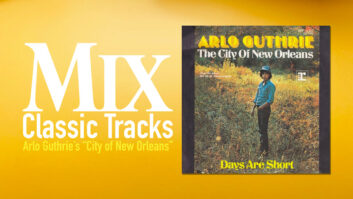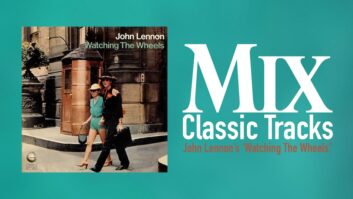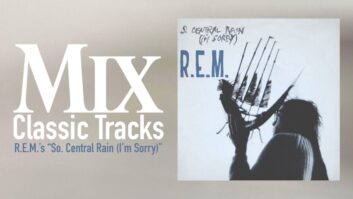This Classic Tracks originally appeared in the December 2009 issue of Mix.
In April 2009, at a party inside Capitol Studios in Hollywood honoring his late friend George Harrison, Gary Wright found himself chatting at a table with Grammy-winning producer David Foster and legendary session drummer Jim Keltner. “Wow, it’s the rhythm section for ‘Dream Weaver,’” he recalls saying. “We all laughed.”
Thirty-four years earlier, Wright was with the same pair at Armin Steiner’s Sound Labs Studio in Hollywood, recording what would turn out to be one of the first — if not the first — all-electronic keyboard pop albums, The Dream Weaver, whose title track would become Wright’s signature hit. The song rose to Number 2 in 1976, the album Number 7.
After spending several years in the late ’60s as keyboardist (and lone American) with UK band Spooky Tooth, Wright went out on his own in 1970, appearing on Harrison’s seminal All Things Must Pass LP and recording several solo albums for A&M Records. Wright briefly re-formed Spooky Tooth with guitarist Mick Jones, but the band finally split up for good in 1974, after which Wright signed a deal with Warner Bros.
While Spooky Tooth had made its name in progressive rock, and his first two solo efforts, Extraction and Footprint, had been rock-oriented, Wright had always longed to produce an R&B disc. “I’d always had a really strong R&B influence in my life,” he says. “Even though there is a similarity in blues and some R&B, guitar riff-wise, I had really always, in my heart, wanted to focus more on rhythm and blues.”
Upon returning from England, Wright rented a house in his native New Jersey and began composing songs for what would become The Dream Weaver. All of the tracks were written on keyboards — with the exception of “Dream Weaver,” which he wrote on guitar. So Wright — armed with an arsenal comprising a Minimoog, Hammond organ, Clavinet, Fender Rhodes and an ARP String Ensemble — began recording demos onto a Revox 2-track reel-to-reel deck. An Echoplex provided the delay so key to what would be the Dream Weaver sound.
Wright’s connection to electronic instruments actually began in the final stages of Spooky Tooth, which is when he bought a Minimoog. “I was just starting to get into the technology,” he says, “but since Spooky Tooth was more of a rock band, I couldn’t get totally into it. I was just unbelievably fascinated by the Minimoog.”
Being sans drummer, Wright used a Univox Rhythm Ace to keep the beat, and the device actually remained a part of the final recordings. “It’s like a little percussion section,” he explains. “Roger Linn used to come to a lot of my concerts and hear the Rhythm Ace. Shortly thereafter, he made the Linn Drum Machine,” a key component of many a small studio for years to come.
After recording a half-dozen demos, the composer played the tapes to a Warner Bros. exec, who was as taken with the tracks as they were. “He said, ‘You gonna do anything else?’ I said, ‘I don’t think so. I don’t think it needs guitar.’ At that stage, I was kind of off guitars. I had played so much with guitar-heavy bands, I said, ‘I’ll just leave it as it is and do an all-keyboard album.’”
While playing on Peter Ivers’ Nirvana Cuba, on which Wright’s sister, Lorna, was singing backup, Wright met guitarist/producer Jay Lewis, who had more recently taken on engineering duties. “Gary came to the studio where we were recording, we hit it off and he asked me to do Dream Weaver with him,” Lewis recalls. Though Lewis was not overly familiar with the types of electronic instruments Wright would be using, Wright notes, “It was new ground for him, too. He just looked at them from an acoustical perspective. And he had really good ears.”
In the spring of 1975, Wright and Lewis booked a week at Sound Labs to do basic tracking. “There was a pile of hit records coming out of there and had been for years,” Lewis notes. The studio had a large room for tracking, along with a smaller room for mixing and vocals/overdubs. “Everything there was really top notch — you walked in the door and you were ready to go.”
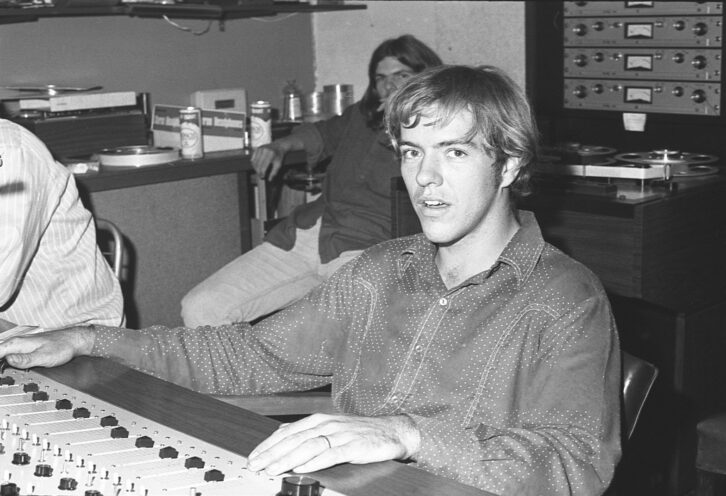
Owner Armin Steiner was particularly known for his ability to customize equipment to suit his clients’ needs. “He knew microphones, rooms, echoes and machines, and how to hot-rod them to get the best sound of out of them,” Lewis says. The recording console was originally a Quad 8 desk, though Lewis notes, “By the time they were done with it, who knows what model it was!” Same goes for the 3M 16-track tape machine.
Wright intended to use his demo recordings as a roadmap for his studio musicians, who would be more used to playing with the standard guitar/bass/drums setup than playing to a Rhythm Ace. “I knew I had to get drummers who could play with rhythm machines,” he says, “because I wanted to use the groove of the rhythm machines.” On a recommendation from session guitarist Hugh McCracken, Wright turned to busy drummers Andy Newmark and Jim Keltner, the latter a veteran of Wright’s previous solo records. (Newmark would play on the majority of the album; Keltner worked strictly on “Dream Weaver.”)
For tracking, Wright was joined by a fresh-faced David Foster (before he became a producer), who played a variety of keyboards, most notably the signature Rhodes piano on “Dream Weaver.” The team was rounded out by another keyboardist, Bobby Lyle, who played clavinet and Rhodes on several of the other tracks.
Wright himself was actually the session bass player, using his Minimoog for the assignment and giving the album — and “Dream Weaver” in particular — a signature sound. “I did a lot of experimentation with it. And Jay really was good, too, in recording it.” The Minimoog was played live through a bass amp, which was miked, while Lewis also took a direct signal from the keyboard, mixing the two together. “The miked bass gave us more of an ambient sound, gave it a little bit more depth,” Wright notes. It also allowed the other players to feel the bass, as they would with an electric bass guitar, while tracking, as opposed to simply hearing it in their headphones.
“Later on,” says Lewis, “people started to make patches that sounded big, like that. In those days, there weren’t any. Of all the things Gary did on that album, his bass playing on that keyboard was really awesome.” Though Wright played his bass live during tracking for the sake of the band performance, most of those parts were replaced during later overdubbing, using the method described above. “The parts he played weren’t something that was predefined, for the most part — they were ‘found’ in the studio.”
Tracking for the album went smoothly, over a week’s time. When it came time to record the final track, the choice was down to two songs, and Wright had a difficult time deciding which to record. “I was in the studio with David Foster and Jim Keltner, and I played David the two songs, and said, ‘Which of these two do you think I should do?’ He looked me, and said, ‘I would do ‘Dream Weaver.’”
That choice resulted in a mega-hit for its composer, though the song didn’t sound quite the way we know it at first. “The original feel was more like The Band’s ‘The Weight,’ with guitars, if you can imagine,” Wright recalls. “So David suggested, ‘Why don’t you do it in a shuffle kind of thing?’ So we changed it to have a swing, kind of shuffle feel,” a rhythm that Keltner adapted to beautifully, as well.
Keltner and Newmark’s drums, by the way, were miked in a fairly straightforward manner, which was Lewis’ preference. “I was not — and I’m still not — a fan of a lot of microphones on drums,” he explains. Lewis used a time-tested basic setup: Shure SM57 on the snare, an Electro-Voice RE20 on the kick and a Sennheiser 421 splitting the tom-toms. For the floor toms, he preferred a favorite mic — a Beyer M500 ribbon, with its distinctive flat round head and large diaphragm — which he still carries around from job to job, just in case.
Classic Tracks: Jimmy Buffett’s “Margaritaville”
Once tracking was completed, Wright and Lewis spent several months adding overdubs at the now-defunct Stronghold Studios in the San Fernando Valley. Their efforts, however, were hampered by tremendous shedding issues from the then-new Ampex Grand Master 456 audio tape they’d used to record basic tracks. “Partway through overdubbing, we started hearing dropouts,” Lewis recalls. “We looked, and we were losing the face of the tape — in chunks.” They quickly returned to Sound Labs, where the tapes were cleaned by hand and then transferred back to Ampex 406, after which overdubbing continued at Stronghold, with Wright filling in gaps by re-recording any damaged parts.
Another correction to “Dream Weaver” was made during mixing. While it seems perfectly natural that the song’s third verse contains no drums, it was actually the result of a “happy accident. There was a technical issue in that verse, but the rest of the take was fantastic,” recalls Lewis. “So we made a decision to just take the drums out of that verse,” filling in the gap with a stereo-panned “spaceship” sound that Lewis created from several pink-noise sources. “In those days, it was a hip thing to do,” he says of the spaceship. “Today, I guess it wouldn’t be so hip.”
In overdubbing, Wright and Lewis added a few other sounds to “Dream Weaver” that gave it its unique flavor. The shimmering, flanged sound of the high string part from the ARP String Ensemble was created by again splitting the signal, one into a direct input to the desk, where it was fed through a flanger, the other signal out to the studio to a fast-spinning Leslie speaker, which was miked in stereo. “That combination really gave it a whole different dimension,” Lewis notes.
Adding to the spacey sound of the track was a whoosh of tinkling chimes, which Wright created on the Minimoog. “They had a little booklet with sounds, and one of them was called ‘Tinkling Bells,’” he explains. “I just tweaked all the parameters and then put it through an Echoplex.”
The most important overdubs, of course, were Wright’s vocals, recorded through a Neumann U87 with slight compression and an EQ that Lewis discovered brought out the edge in the singer’s voice. “He would put everything he had into every take,” Lewis recalls. “The veins in his neck would stand out. With Gary, you don’t have to manufacture anything, you’re just taking it down.” The engineer added a small amount of pre-delay during mixing, adding even greater depth to the soulful vocals.
While not intentional, Wright created the next step in pop recording, which would be heard echoing into the 1980s. “I didn’t really have a goal, sound-wise; I just wanted to make a good album with good songs,” he says. “All these sounds just fell into place.”
